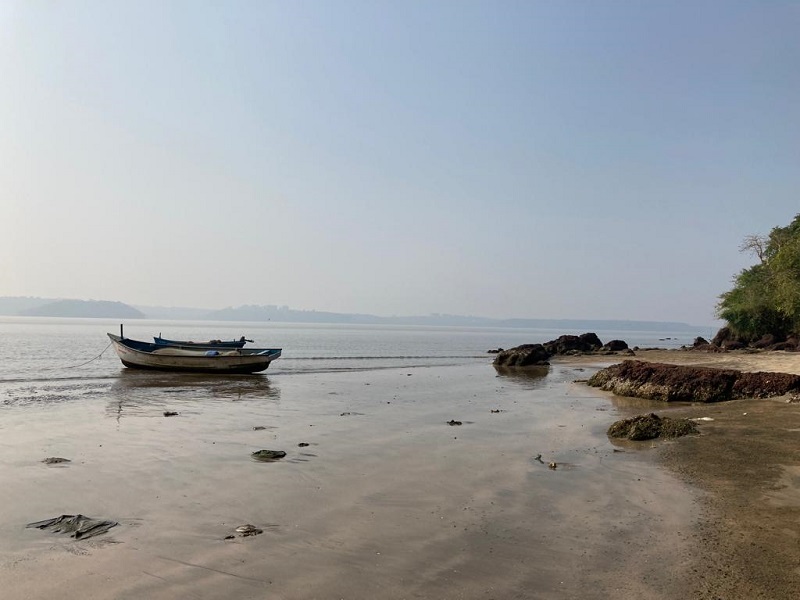
Siridao, the village, the beach and traditional Pejechem fest after Easter
A few minutes drive from Panaji will take one to the village of Siridao and its beach. Not really known among visitors to the state, but popular enough with the local crowd. Devoid of any of the typical touristy activities of shacks, stalls and other what have you, the beach is relatively clean and quiet as a result.
One will find the local fishermen and their boats ashore along with their nets as the main activity. It used to have a lot of collectable sea shells but not really any longer. The horizon will get you views of Marmagoa and its harbour quite in the distance.
A sizeable catholic population of the village have immigrated abroad but still retain their houses here. Hence one will see a lot of closed residences as one drives along the road. The beach is actually accessible from two points. One just at the entrance of the village which is a quite small stretch without any of the waves typical of Goa’s famous coastline. That maybe because it really is an extension of the Zuari river. For the other entry to the beach, one needs to drive into the village, pass the church. In fact, there is no visible entry sign to the beach and one can quite miss it. However, this part is typical of a beach, sandy and with gentle waves.



The village is very well known for the traditional Pejechem fest that is celebrated at the Jesus of Nazareth Chapel, the first Sunday after Easter. The chapel was built in the memory of departed souls who passed away due to an epidemic. Popular belief is that this practice of serving Pez or Kanji (a watery porridge of local Goan boiled rice) was started by then Landlord of the village, as a result of a failure to offer prayers for these dead souls of the land. The kanji is offered free to all only after it is first offered to the dead souls. The ‘kanji or pez’ is cooked in seven large copper vessels at the venue itself and tradition has it that only married women can cook the kanji.
Behind the chapel one can have a splendid view of the Zuari river. Also of interest is a circular dome shaped structure, right behind the chapel. Few scholars believe that the structure is indicative of the presence of Portuguese Jews and that it could have been a synagogue. Being on a hillock, it is rumoured that there used to be caves below. Presently it is quite in ruins and totally unsafe to access and I would advise you to stay away from being too adventurous with the caves.
To read more on the fascinating history behind this place please visit https://jewsofgoa.com/2017/01/25/the-times-siridao-chapel-could-have-jewish-history-historian/.

